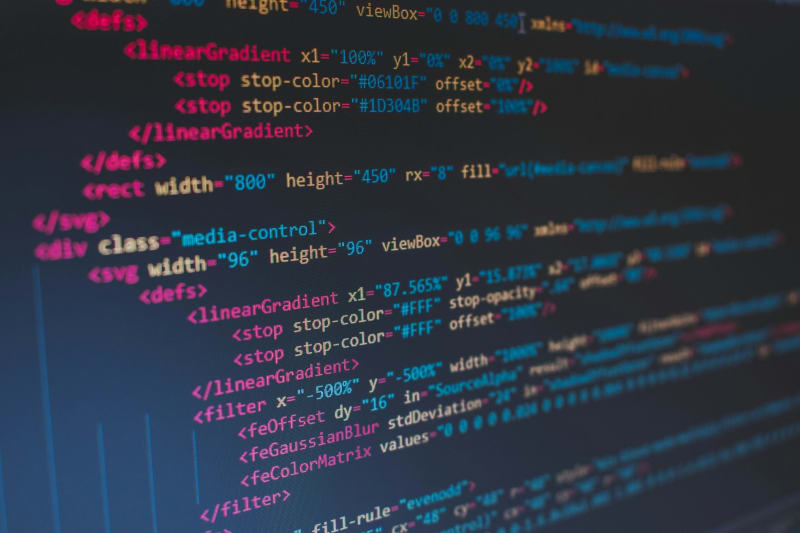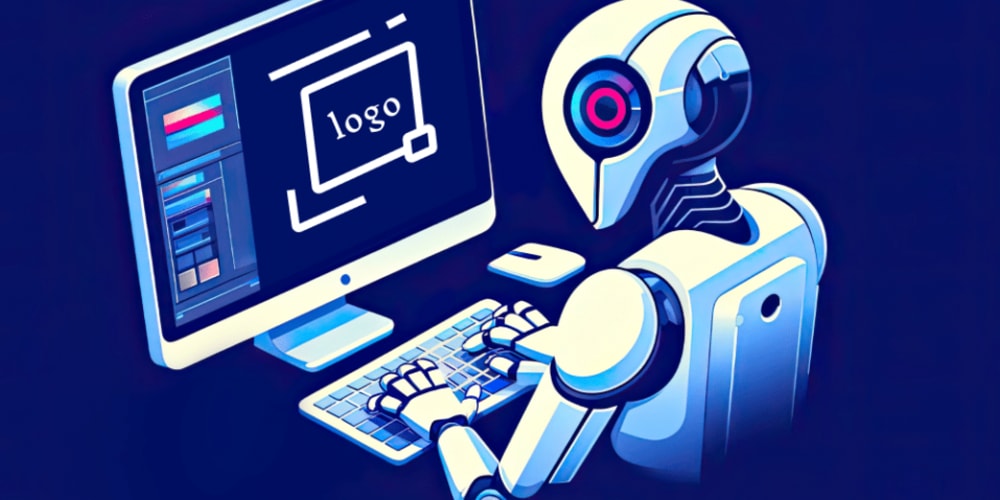<!DOCTYPE html>
The Future of Web Development: The Role of AI and Automation
<br>
body {<br>
font-family: Arial, sans-serif;<br>
line-height: 1.6;<br>
margin: 0;<br>
padding: 0;<br>
background-color: #f4f4f4;<br>
color: #333;<br>
}</p>
<div class="highlight"><pre class="highlight plaintext"><code> header {
background-color: #333;
color: #fff;
padding: 1rem 0;
text-align: center;
}
h1, h2, h3 {
margin-top: 2rem;
font-weight: bold;
}
p {
margin-bottom: 1rem;
}
img {
display: block;
margin: 1rem auto;
max-width: 100%;
}
code {
font-family: monospace;
background-color: #eee;
padding: 0.2rem 0.5rem;
border-radius: 3px;
}
pre {
background-color: #eee;
padding: 1rem;
border-radius: 3px;
overflow-x: auto;
}
.container {
max-width: 960px;
margin: 0 auto;
padding: 2rem;
background-color: #fff;
border-radius: 5px;
box-shadow: 0 2px 5px rgba(0, 0, 0, 0.1);
}
.section {
margin-bottom: 4rem;
}
</code></pre></div>
<p>
The Future of Web Development: The Role of AI and Automation
Introduction
The web development landscape is constantly evolving. With the rise of cutting-edge technologies like artificial intelligence (AI) and automation, the way we build websites and applications is being revolutionized. This article explores the profound impact of AI and automation on web development, examining the opportunities and challenges they present.
AI and automation are no longer futuristic concepts. They are already transforming various industries, and web development is no exception. From automating repetitive tasks to creating intelligent user interfaces, AI and automation are streamlining workflows, enhancing efficiency, and pushing the boundaries of what's possible online.
AI in Web Development: A Deep Dive
AI's influence on web development is far-reaching, encompassing several key areas:
1. Code Generation and Optimization
AI-powered tools can generate code automatically, saving developers time and effort. They can understand natural language instructions and translate them into code, automating repetitive coding tasks. These tools can also analyze existing code to identify potential optimizations and refactor it for better performance and readability.

2. User Interface (UI) Design and Development
AI can assist in UI design by analyzing user behavior patterns and generating design suggestions. Tools can analyze existing websites and provide insights on layout, color schemes, and user experience (UX) optimization. AI can also create personalized and adaptive interfaces that cater to individual user preferences.

3. Content Creation and Personalization
AI can generate website content, such as blog posts, product descriptions, and marketing copy. It can also personalize website content based on user data and preferences, providing a more engaging and relevant experience. AI-powered chatbots and virtual assistants can answer user queries and provide personalized support.

4. Predictive Analytics and Optimization
AI can analyze website data to predict user behavior and identify potential issues. This data can be used to optimize website performance, improve search engine optimization (SEO), and personalize the user experience. AI-powered analytics tools can provide insights into user engagement, conversion rates, and other key metrics.

Automation in Web Development
Automation plays a crucial role in optimizing web development workflows and enhancing efficiency. Key areas where automation is transforming web development include:
1. Task Automation
Repetitive tasks like testing, deployment, and code formatting can be automated, freeing up developers to focus on more creative and complex aspects of development. Automation tools can also streamline the development process, reducing errors and ensuring consistency.

2. Continuous Integration and Continuous Deployment (CI/CD)
CI/CD pipelines automate the process of building, testing, and deploying web applications. This ensures faster delivery cycles, improved code quality, and reduced manual errors. Tools like Jenkins and GitLab CI/CD streamline the deployment process.

3. Infrastructure Management
Automation can simplify infrastructure management by automating tasks like server provisioning, scaling, and monitoring. Cloud platforms like AWS and Azure offer tools for automating infrastructure management, reducing manual effort and improving efficiency.

4. Testing and Quality Assurance
Automation tools can perform repetitive tests, such as unit testing and integration testing, ensuring code quality and reducing manual effort. Automated testing can also help identify bugs early in the development process, improving code reliability.

Tools and Technologies
Numerous tools and technologies are driving the integration of AI and automation in web development. Here are some notable examples:
1. AI-powered Code Generators
-
GitHub Copilot
: An AI-powered code completion tool that assists developers in writing code faster and more efficiently. -
Tabnine
: Another code completion tool that utilizes AI to suggest code snippets and complete code lines. -
DeepCode
: A code analysis tool that uses AI to identify potential bugs and vulnerabilities in code.
2. UI Design and Development Tools
-
Figma
: A design platform with AI-powered features for generating design suggestions and creating interactive prototypes. -
Adobe XD
: A design tool that uses AI to automate tasks like generating UI elements and creating design systems. -
UXPin
: A prototyping tool that offers AI-powered features for user testing and design feedback.
3. Automation Tools for Web Development
-
Jenkins
: An open-source automation server for CI/CD pipelines. -
GitLab CI/CD
: A CI/CD platform integrated with GitLab, offering automated workflows for building, testing, and deploying web applications. -
Ansible
: An automation tool for provisioning and managing infrastructure. -
Terraform
: A tool for defining and managing infrastructure as code.
Examples and Case Studies
1. AI-powered Personalization on Netflix
Netflix uses AI to analyze user data and recommend personalized content based on viewing history, preferences, and other factors. This AI-driven personalization enhances user engagement and satisfaction.
2. Automated Code Reviews at Google
Google utilizes AI-powered code review tools to identify potential issues in code. This automation streamlines the review process and ensures code quality.
3. AI-powered Chatbots for Customer Support
Many companies employ AI-powered chatbots to handle customer inquiries and provide support. These chatbots can understand natural language and provide instant responses, enhancing customer satisfaction.
Challenges and Considerations
While AI and automation offer significant advantages, they also present challenges and considerations for web developers:
1. Job Security Concerns
Some fear that AI and automation might replace human web developers. However, it's more likely that these technologies will augment human capabilities, creating new roles and opportunities.
2. Data Privacy and Security
AI relies heavily on data. It's crucial to address data privacy and security concerns when using AI-powered tools in web development.
3. Bias and Fairness
AI algorithms can inherit biases from the data they are trained on. It's essential to ensure that AI-powered web applications are fair and unbiased.
4. Ethical Considerations
The ethical implications of AI and automation in web development must be carefully considered. Developers must ensure responsible use of these technologies to avoid negative social and environmental consequences.
Conclusion
The future of web development is inextricably linked to AI and automation. These technologies are transforming the way we build websites and applications, driving innovation and efficiency. While challenges exist, the potential benefits of AI and automation are undeniable. By embracing these technologies and addressing the ethical considerations involved, web developers can unlock new opportunities and create a more dynamic and user-centric web experience.
The key takeaway is that AI and automation are not replacements for human web developers, but rather powerful tools that can augment our abilities and create a more efficient and innovative development process. As these technologies continue to evolve, we can expect even more profound changes in the web development landscape, paving the way for a future filled with exciting possibilities.


















